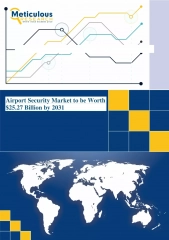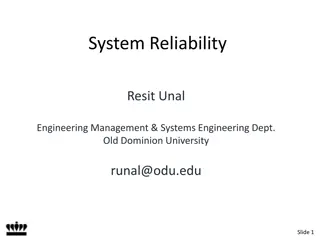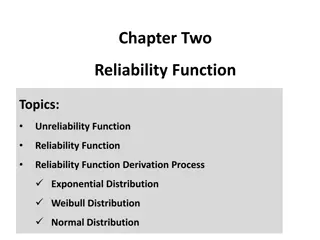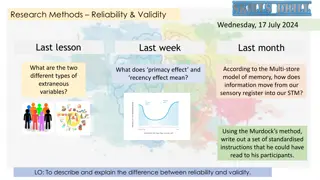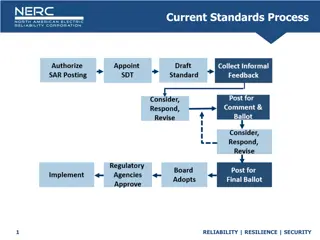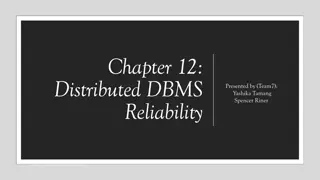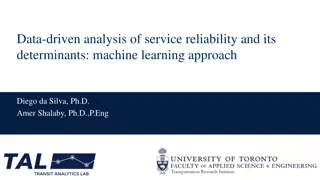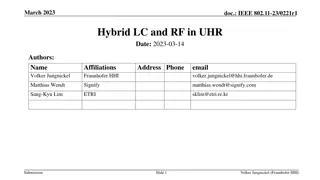Challenges in Modern IS: Reliability & Security
This week explores the challenges facing modern information systems in terms of reliability, security, and dependability. It delves into the significance of reliability, availability, and redundancy in ensuring system functionality and mitigating downtime risks. The session also discusses the importance of system trustworthiness, failure probabilities, and strategies like redundancy to enhance reliability.
Download Presentation

Please find below an Image/Link to download the presentation.
The content on the website is provided AS IS for your information and personal use only. It may not be sold, licensed, or shared on other websites without obtaining consent from the author.If you encounter any issues during the download, it is possible that the publisher has removed the file from their server.
You are allowed to download the files provided on this website for personal or commercial use, subject to the condition that they are used lawfully. All files are the property of their respective owners.
The content on the website is provided AS IS for your information and personal use only. It may not be sold, licensed, or shared on other websites without obtaining consent from the author.
E N D
Presentation Transcript
ISNE101 Dr. Ken Cosh Week 13
This Week Challenges (still) facing Modern IS Reliability Security
Dependability The dependability of a system reflects the user s degree of trust in that system their confidence that it will operate as expected. Dependability Availability Reliability Safety Security The ability of the system to operate without catastrophic failure The ability of the system to protect itelf against accidental or deliverate intrusion The ability of the system to deliver services as specified? The ability of the system to deliver services when requested a
Reliability and Availability Reliability The probability of failure-free system operation over a specified time in a given environment for a given purpose Availability The probability that a system, at a point in time, will be operational and able to deliver the requested services It is sometimes possible to subsume system availability under system reliability Obviously if a system is unavailable it is not delivering the specified system services However, it is possible to have systems with low reliability that must be available. So long as system failures can be repaired quickly and do not damage data, low reliability may not be a problem
Why is Reliability important? Costs of downtime for a business critical system How much would a 15 minute failure of service cost? How much would a days failure cost? If this was an Email service? What percent failure is acceptable?
Redundancy One way of dealing with Reliability is to use redundancy Spare components, so if one fails another could be used. Back-Ups Availability Math If a system is 98% available that means it is not available 2% of the time (i.e. about half an hour each day!!!) Many systems are now needed to be 99.999% available.
Components in Series Consider if each component was 98% reliable, and there were 5 components in series. Component 1 98% Component 2 98% Component 3 98% Component 4 98% Component 5 98% .98 * .98 * .98 * .98 * .98 = 0.9, i.e. only 90% all components are running just 90% of the time. With more components, it is increasingly less reliable
Components in Parallel Now consider these components in parallel. The probability of failure is 0.02 each time; 0.02 * 0.02 * 0.02 * 0.02 * 0.02 = 0.0000000032 !!! Hence, redundancy is used to increase reliability. If one component fails, another can be used in it s place. Component 1 98% Component 2 98% Component 3 98% Component 4 98% Component 5 98%
Hardware vs Software Components in Parallel is sometimes called Triple Modular Redundancy , and it has 2 key assumptions; Hardware components do not have common design faults. Components fail randomly (there is low chance of simultaneous failure) Neither of these assumptions are true for software; Copying components copies design faults. So simultaneous failure is inevitable.
5 nines 99.999% Reliability? How about electricity? How about network connection?
Reliability Redundancy is the Key! Spare components Components running in parallel Triple Modular Redundancy Identify unreliable components and arrange back ups. UPS Multiple ISPs
Security A wide variety of threats Phishing Social Engineering Hacking Spamming Credit Card Fraud Denial Of Service Malware Trojans Virus / Worm
Potential Threats Intrusion Viruses / Worms External Attacks Intrusion Viruses / Worms Interception
Threats Intrusion Gaining Access to internal infrastructure Viruses / Worms Replicating Software External Attacks Denial of Service. Interception Catching communication while en route between sender and receiver.
Intrusion Gaining access to internal infrastructure; Stealing Mobile Phone Guessing Passwords Hacking into private spaces Once a hacker has access to an account, they have the same rights as the account owner. Problem 1: Preventing hacker from accessing account. Problem 2: Finding out what someone may have done while they had access.
Viruses / Worms Virus Software Program that replicate itself on more PC s in a similar way to viruses spread between people. Viruses need another program to piggyback off, e.g. a macro in a spreadsheet, or document. Are often spread using email Worms A small piece of software that uses security loopholes to replicate. E.g. finds a loophole in Windows, scans network for another PC with a similar loophole and copies itself to the new PC etc.
External Attacks Attacks without gaining access to a private device. Denial of Service(DoS) Very Common Attacks Purpose, to use up bandwidth or service, by spoof conversations. Blocking Webservers with repeated hits Spam emails Distributed Denial of Service (DDOS) Attacking from many addresses simultaneously. Code Red Worm Chain Letters
Interception Catching communication whilst on route between sender and receiver. Intercepting Signals. Wireless Signals Government listening in on telephone conversations Normally minimised through encryption. Accessing someone else s service Using bandwidth of wireless network
Improving Security Security Policies Limiting users access & actions Firewalls Protection between network and internet Authentication Passwords etc. Encryption Encoding contents of communication Patches Responding to security breaches
Security Policies Access Control Lists (ACL) Limit which users can do what (e.g. update websites) Signed agreements for service When allowing users onto a network, normally they sign an agreement, regarding terms of use. Did you sign one at CMU? Policies could include, Regular password changes Whether personal use of service is permitted Antivirus updates Can help against, external attacks, intrusion, virus / worms
Firewalls Hardware and / or Software protection sitting between internal network and internet. Can help stop viruses/worms from accessing the network, W W W
Authentication Software to ensure permission of user to access service Password Finger prints / retina scans Helps against intrusion
Encryption Encoding the contents of a transmission so it can t be decrypted on route. Symmetric-key encryption Public / Private key encryption Helps prevent interception.
Symmetric Key Encryption Both sender and receiver use the same code to encrypt and then decrypt a message. If I tell you to move each character back two in the alphabet, and then send you this message; Jgnnq Encuu Anyone who intercepts the message gets nothing, but you are able to decrypt it. More interesting patterns can be created to increase security. Substitution Key: FANCY Transposition Message: eatitnihmexnetmgme dt
Patches Response to a virus or security breach Anti virus software often updates to add new virus definitions. Operating systems regularly update to deal with security loopholes which may allow worms to work.


